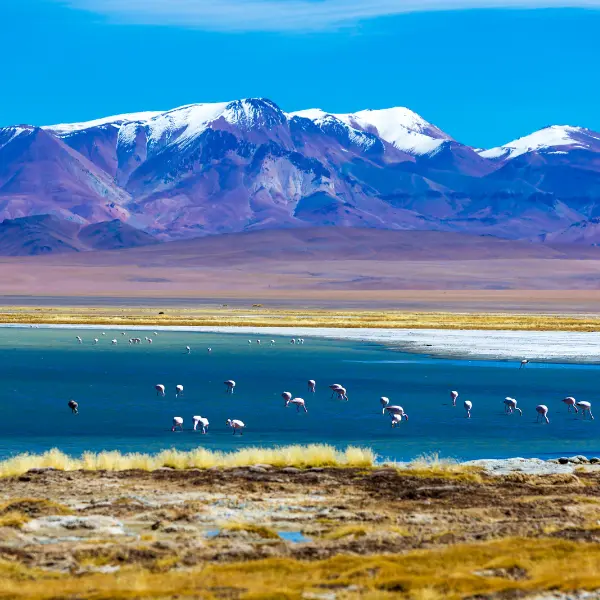


Cusco , Machu Picchu , Sacred Valley , Puno , Uyuni , La Paz .

Santiago , Uyuni , La Paz .

Cusco , Machu Picchu , Sacred Valley , Lima , Puno , Uyuni , La Paz .

Uyuni , La Paz , Tiwanaku , Copacabana .
The best time to visit La Paz is from May to October, during the dry season when the weather is sunny and cool, ideal for exploring the city and surrounding attractions. The wet season, from November to March, brings frequent rain showers but also greener landscapes.
Top tours in La Paz include visits to the Witches’ Market, Plaza Murillo, and San Francisco Church. The city’s cable car network offers incredible views, while day trips to Moon Valley and Tiwanaku archaeological site are highly recommended.
Visitors can wander through bustling markets, enjoy traditional Bolivian food, and experience the nightlife in Sopocachi. Adventurous travelers often take the famous “Death Road” bike tour or explore surrounding Andean landscapes.
La Paz has a high-altitude climate, with average temperatures ranging from 5–17°C. The dry season is cooler and clearer, while the wet season brings frequent rain. Nights are often cold due to the city’s altitude.
La Paz is served by El Alto International Airport (LPB), one of the highest commercial airports in the world. It is located just above the city, providing access to both domestic and international flights.
Hotels in La Paz range from boutique accommodations and colonial-style lodges to budget hostels. Many offer panoramic views of the city and easy access to main attractions and cable car stations.
La Paz offers a mix of traditional Bolivian cuisine and international options. Street food, such as salteñas and anticuchos, is popular, while fine dining restaurants experiment with Andean ingredients.
The Bolivian boliviano (BOB) is the official currency. Credit cards are accepted in hotels and major restaurants, but smaller markets and street vendors usually require cash. ATMs are widely available in the city.
La Paz hosts colorful festivals such as Gran Poder, which showcases traditional dances and costumes, and the Alasitas Fair, where miniature items are bought as symbols of good fortune. National holidays bring parades and vibrant celebrations.
La Paz is Bolivia’s administrative capital, located in a valley surrounded by snow-capped peaks. Known for its unique topography, culture, and traditions, the city is both modern and deeply rooted in its indigenous heritage.
Main attractions include the Witches’ Market, cable car system, Moon Valley, and Tiwanaku. The dramatic mountain backdrop and cultural richness make La Paz an extraordinary destination in South America.

We're flexible! Postpone your tour with zero cost up to 10 days prior to departure.